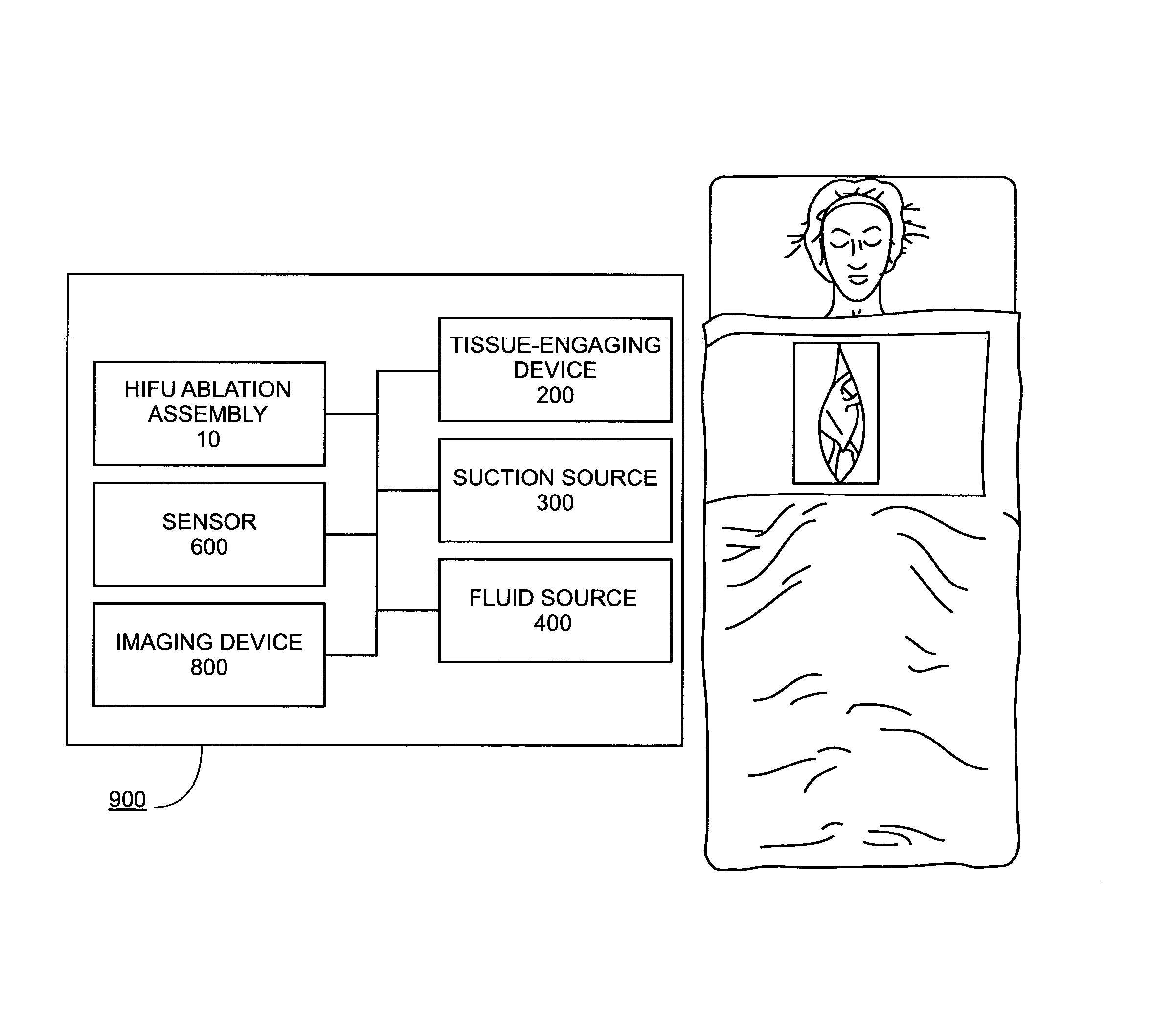Methods of using high intensity focused ultrasound to form an ablated tissue area containing a plurality of lesions
a tissue area and high intensity technology, applied in ultrasonic/sonic/infrasonic diagnostics, therapy, applications, etc., can solve the problems of coagulative necrosis, complex surgical maze procedure, and tissue damage, and achieve the effect of easy positioning, manipulation, stabilization and/or holding an organ
- Summary
- Abstract
- Description
- Claims
- Application Information
AI Technical Summary
Benefits of technology
Problems solved by technology
Method used
Image
Examples
Embodiment Construction
[0072] One embodiment of an ablation or stimulation assembly or system 10 for use in the methods of the present invention is illustrated in FIG. 1 and is similar to the HIFU stimulation assembly described in prior U.S. patent application Ser. No. 10 / 464,213 and U.S. patent application Ser. No. 10 / 600,871, the disclosures of which are incorporated herein by reference. The high intensity focused ultrasound ablation or stimulation assembly or system 10 includes a focused ultrasound ablation or stimulation device 12, a power supply 14 and a controller 16. The focused ultrasound ablation or stimulation device 12 is similar to that described in U.S. patent applications Ser. Nos. 10 / 464,213 and 10 / 600,871 and includes a focused ultrasound emitting member 18, an elongate handle shaft or body 20 having a distal end at which the ultrasound emitting member is disposed and a handle or handpiece 22 coupled to a proximal end of the handle shaft 20. As shown in FIGS. 2 and 3, the ultrasound emitti...
PUM
 Login to View More
Login to View More Abstract
Description
Claims
Application Information
 Login to View More
Login to View More - R&D
- Intellectual Property
- Life Sciences
- Materials
- Tech Scout
- Unparalleled Data Quality
- Higher Quality Content
- 60% Fewer Hallucinations
Browse by: Latest US Patents, China's latest patents, Technical Efficacy Thesaurus, Application Domain, Technology Topic, Popular Technical Reports.
© 2025 PatSnap. All rights reserved.Legal|Privacy policy|Modern Slavery Act Transparency Statement|Sitemap|About US| Contact US: help@patsnap.com



